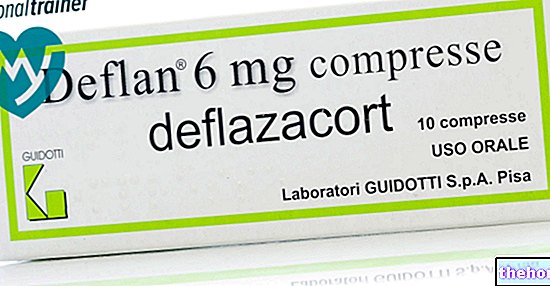Active ingredients: Paromomycin
HUMATIN 250 mg HARD CAPSULES
HUMATIN 25 mg / ml SYRUP
Why is Humatin used? What is it for?
PHARMACOTHERAPEUTIC CATEGORY
Antibiotic, intestinal antimicrobial.
THERAPEUTIC INDICATIONS
Infections of the intestinal tract by sensitive germs (E. coli, Shigelle, Salmonella excluding S. Typhi, etc.). Sterilization of intestinal contents in preparation for intestinal interventions. Intestinal amoebiasis (acute and chronic). Adjuvant in the treatment of hepatic coma (for sterilization of the intestinal flora producing ammonia).
Contraindications When Humatin should not be used
Hypersensitivity to the active substance (paromomycin) or to any of the excipients.
HUMATIN is also contraindicated: in cases of obstruction or severe ulcerative lesions of the intestine; in children under two years of age; in renal insufficiency; in myasthenic syndromes; in malabsorption syndromes.
Precautions for use What you need to know before taking Humatin
In pregnant women, the product should be administered in cases of real need, under the direct supervision of the doctor.
Paromomycin is normally not absorbed by the digestive tract, but abnormal and unpredictable absorption can occur at the level of lesions of the intestinal mucosa; therefore, since the antibiotic is potentially ototoxic and nephrotoxic, it is advisable, especially in long-term therapies, to carry out periodic checks of renal function and audiometric tests.
Anti-kinetotic drugs should not be administered simultaneously, as these could prevent early recognition of the first signs of ototoxicity.
Caution also requires the treatment of patients with liver injury.
Interactions Which drugs or foods can modify the effect of Humatin
Do not administer the antibiotic at the same time as other potentially nephrotoxic agents such as: kanamycin, streptomycin, neomycin, etc.
Warnings It is important to know that:
The route of administration of HUMATIN is oral. In this way, not being absorbed in normal conditions, it only carries out a local antibacterial action in the intestine.
Treatment with HUMATIN, as with other antibiotics, can give rise to superinfections from bacterial agents insensitive to it or from fungi.
Paromomycin, like all aminoglycosides, can precipitate or exacerbate myasthenic crises by inhibiting the release of Acetylcholine from the pre-synaptic neuron.
For those who carry out sports activities (only for the syrup):
The use of medicines containing ethyl alcohol can determine a positive anti-doping test in relation to the alcohol concentration limits indicated by some sports federations.
Keep this medicine out of the reach and sight of children.
Dosage and method of use How to use Humatin: Dosage
The doses expressed in mg of paromomycin base, for the various indications, are those indicated below:
Bacterial dysentery: 35-50 mg / kg of weight (in adults 2-3 g). It is advisable to suspend the therapy once the symptoms linked to the infection have ceased (the treatment, in general, should not be prolonged beyond 3-5 days).
Amoebiasis: 25-35 mg / kg of weight, administered in 3 doses in correspondence with meals, for 5-10 days. In particularly resistant forms, the dose can be increased according to the doctor's judgment.
Pre-operative sterilization of the intestine: 35 mg / kg of weight for 4 days.
Sterilization of the intestine during hepatic coma: adults: average dose 4 g per day, appropriately divided over the day, for 5-6 days.
Overdose What to do if you have taken too much Humatin
Following the intake of doses of the drug highly higher than those recommended, nephrotoxicity and ototoxicity may occur which require adequate treatment.
Side Effects What are the side effects of Humatin
When the drug is administered in high doses (greater than 3 g per day), the appearance of diarrhea, abdominal cramps, feeling of nausea has been observed in some subjects.
Furthermore, in cases of abnormal absorption (see special warnings), especially with high or excessive doses, phenomena of nephrotoxicity (with oliguria, albuminuria, haematuria, etc.) or ototoxicity (with dizziness, humming, hypoacusis) have been reported. Rarely, hypersensitivity reactions with skin rashes of different types or locations have been reported.
Report any undesirable effect not described in this leaflet to your doctor or pharmacist.
Expiry and Retention
The expiry date shown on the package refers to the product in intact packaging, correctly stored.
Warning: Do not use the medicine after the expiry date indicated on the package.
Store at a temperature not exceeding 25 ° C. Keep the medicine in the original container to keep it away from light and humidity
Do not disperse the medicine in the environment after use. For disposal, use the special containers for the separate collection of drugs.
COMPOSITION
HUMATIN 250 mg HARD CAPSULES
Each capsule contains - Active ingredient: 357.2 mg paromomycin sulphate (equal to 250 mg of paromomes
Excipients: anhydrous colloidal silica, magnesium stearate, gelatin, titanium dioxide, red iron oxide, yellow iron oxide, black iron oxide.
HUMATIN 25 mg / ml SYRUP
100 ml contain - Active ingredient: paromomycin sulphate g 3,572 (equal to g 2,5 of paromomicin
Excipients: sucrose, glycerin, saccharin, sodium hydroxide, sodium bicarbonate, methyl p-hydroxybenzoate, propyl p-hydroxybenzoate, ethyl alcohol, spicy aroma, purified water. Each 5 ml (1 teaspoon) contains the equivalent of 125 mg of paromomycin base.
PHARMACEUTICAL FORM AND CONTENTS OF THE PACKAGES
HARD CAPSULES and SYRUP for oral use
HUMATIN 250 mg HARD CAPSULES: box of 16 capsules
HUMATIN 25 mg / ml SYRUP: pack of 1 bottle of 60 ml pack of 1 bottle of 200 ml.
Not all pack sizes may be marketed
Source Package Leaflet: AIFA (Italian Medicines Agency). Content published in January 2016. The information present may not be up-to-date.
To have access to the most up-to-date version, it is advisable to access the AIFA (Italian Medicines Agency) website. Disclaimer and useful information.
01.0 NAME OF THE MEDICINAL PRODUCT
HUMATIN
02.0 QUALITATIVE AND QUANTITATIVE COMPOSITION
HUMATIN 250 mg HARD CAPSULES
Each capsule contains: 357.2 mg paromomycin sulfate (equal to 250 mg of paromomycin)
HUMATIN 25 mg / ml SYRUP
100 ml contain: paromomycin sulphate 3,572 g (equal to 2,5 g of paromomycin)
Each 5 ml (1 teaspoon) contains the equivalent of 125 mg of paromomycin base.
03.0 PHARMACEUTICAL FORM
Hard capsules and syrup for oral use.
04.0 CLINICAL INFORMATION
04.1 Therapeutic indications
Infections of the intestinal tract by susceptible germs (from E. coli, Shigelle, Salmonella, excluded S. Typhi, etc.). Sterilization of intestinal contents in preparation for intestinal interventions. Intestinal amoebiasis (acute and chronic). Adjuvant in the treatment of hepatic coma (for sterilization of the intestinal flora producing ammonia).
04.2 Posology and method of administration
The posologies, expressed in mg of paromomycin base, for the various indications, are as follows:
Bacterial dysentery: 35/50 mg / kg of weight (in adults 2-3 g). It is advisable to suspend the therapy once the symptoms linked to the infection have ceased (the treatment, in general, should not be prolonged beyond 3-5 days).
Amoebiasis: 25/35 mg / kg of weight, administered in 3 doses in correspondence with meals, for 5-10 days. In particularly resistant forms, the dose can be increased according to the doctor's judgment.
Pre-operative sterilization of the intestine: 35 mg / kg of weight for 4 days.
Sterilization of the intestine during hepatic coma: adults: average dose 4 g per day, appropriately divided over the day, for 5-6 days.
04.3 Contraindications
Hypersensitivity to the active substance or to any of the excipients.
Humatin is also contraindicated in cases of obstruction or severe ulcerative lesions of the intestine; in children under two years of age; in renal insufficiency; in myasthenic syndromes; in malabsorption syndromes.
04.4 Special warnings and appropriate precautions for use
Paromomycin is normally not absorbed by the digestive tract, but abnormal and unpredictable absorption can occur at the level of lesions of the intestinal mucosa; therefore, since the antibiotic is potentially ototoxic and nephrotoxic, it is advisable, especially in long-term therapies, to carry out periodic checks of renal function and audiometric tests. In any case, protracted treatments should be avoided as they can favor the growth of bacterial strains that are insensitive to the preparation. .
Caution requires the treatment of patients with liver injury.
Paromomycin, like all aminoglycosides, can precipitate or exacerbate myasthenic crises by inhibiting the release of Acetylcholine from the pre-synaptic neuron.
Keep this medicine out of the reach and sight of children.
04.5 Interactions with other medicinal products and other forms of interaction
Anti-kinetic drugs should not be administered concurrently, as these could prevent early recognition of the first signs of ototoxicity.
Do not administer the antibiotic at the same time as other potentially nephrotoxic agents such as: kanamycin, streptomycin, neomycin, etc.
04.6 Pregnancy and lactation
In pregnant women, the product should be administered in cases of real need, under the direct supervision of the doctor.
04.7 Effects on ability to drive and use machines
Nobody.
04.8 Undesirable effects
When the drug is administered in high doses (greater than 3 g per day), the appearance of diarrhea, abdominal cramps, feeling of nausea has been observed in some subjects.
Furthermore, in cases of abnormal absorption, especially with high or excessive doses, phenomena of nephrotoxicity (with oliguria, albuminuria, haematuria, etc.) or ototoxicity (with dizziness, buzzing, hypoacusis) have been reported. Rarely, hypersensitivity reactions with skin rashes of different types or locations have been reported.
04.9 Overdose
Following the intake of doses of the drug highly higher than those recommended, nephrotoxicity and ototoxicity may occur which require adequate treatment.
05.0 PHARMACOLOGICAL PROPERTIES
05.1 Pharmacodynamic properties
ATC: A07AA06
Paromomycin sulfate is an aminoglucoside antibiotic with high activity and broad spectrum of action against both aerobic and anaerobic Gram-positive and Gram-negative bacteria. Paromomycin is also endowed with antiprotozoal and anthelmintic activity and is effective on Entamoeba histolytica, on Giardia and in teniasis.
After long treatments with paromomycin resistant microorganisms may appear; c "is also cross-resistance with other aminoglycoside antibiotics (Kanamycin, neomycin and streptomycin).
Paromomycin works by binding to 7OS ribosomes.
05.2 "Pharmacokinetic properties
The blood and urinary levels of paromomycin in animals and humans were evaluated after oral, subcutaneous and intravenous administration.
Paromomycin, administered orally, is not absorbed through the digestive system ensuring very high concentrations in the intestinal contents and ensuring maximum tolerability and the absence of any systemic effect. In humans, after oral administration at full doses and for extremely prolonged periods, no antibacterial activity in plasma and urine has been demonstrated.
05.3 Preclinical safety data
The toxicity of paromomycin is extremely low. Acute oral toxicity in mice showed an LD50 greater than 2000 mg / kg. Even after prolonged treatments for 7 weeks, paromomycin was perfectly tolerated up to doses of 770 mg / kg in rats and 400 mg / kg in monkeys. In humans, no cases of oto-vestibular toxicity have ever been observed following treatment with paromomycin.
06.0 PHARMACEUTICAL INFORMATION
06.1 Excipients
HUMATIN 250 mg HARD CAPSULES
Anhydrous colloidal silica, magnesium stearate, gelatin, titanium dioxide, yellow iron oxide, red iron oxide, black iron oxide.
HUMATIN 25 mg / ml SYRUP
Sucrose, glycerin, saccharin, sodium hydroxide, sodium bicarbonate, methyl p-hydroxybenzoate, propyl p-hydroxybenzoate, ethyl alcohol, spicy aroma, purified water.
06.2 Incompatibility
Paromomycin loses its activity in the presence of bentonite, magnesium trisilicate, pectin, tragacanth gum, acacia gum, kaolin, methylcellulose, polysorbate 80, silicic anhydride, sodium alginate.
06.3 Period of validity
HUMATIN 250 mg HARD CAPSULES: three years.
HUMATIN 25 mg / ml SYRUP: two years.
06.4 Special precautions for storage
Store at a temperature not exceeding 25 ° C. Store the medicine in the original container to keep it away from light and moisture.
06.5 Nature of the immediate packaging and contents of the package
HUMATIN 250 mg HARD CAPSULES: box of 16 capsules in blister
HUMATIN 25 mg / ml SYRUP: 1 bottle of 60 ml
1 bottle of 200 ml
06.6 Instructions for use and handling
None.
07.0 MARKETING AUTHORIZATION HOLDER
Pfizer Italia S.r.l.
Via Isonzo, 71 - 04100 Latina
08.0 MARKETING AUTHORIZATION NUMBER
HUMATIN 250 mg HARD CAPSULES
16 capsules of 250 mg - AIC n. 016531016
HUMATIN 25 mg / ml SYRUP
1 bottle of 60 ml - AIC n. 016531028
1 bottle of 200 ml - AIC n. 016531030
09.0 DATE OF FIRST AUTHORIZATION OR RENEWAL OF THE AUTHORIZATION
HUMATIN 250 mg HARD CAPSULES - 16 capsules of 250 mg: 29 November 1960/31 May 2005
HUMATIN 25 mg / ml SYRUP - 1 bottle of 60 ml: 24 November 1961/31 May 2005
HUMATIN 25 mg / ml SYRUP - 1 bottle of 200 ml: 29 July 1999/31 May 2005
10.0 DATE OF REVISION OF THE TEXT
October 2011























-nelle-carni-di-maiale.jpg)




